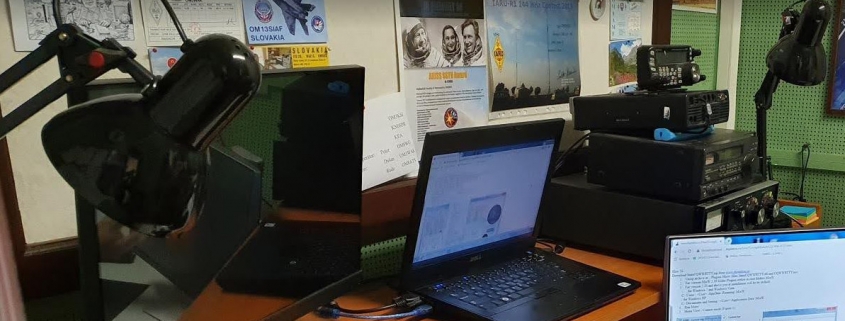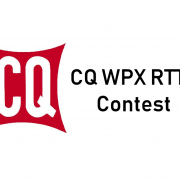CQ WW RTTY Contest 2020
48 hours, 2 operators, 2 operators in training, 3 bands, 2 antennas and 1 radio station. This is also how the last weekend of September could be described.
After last year’s September performance, this contest was full of expectations. A new helper, ICOM IC-7300, was added to the equipment and we added an antenna for the 80 m band. After the March failure in the BARTG HF RTTY Contest with the YAESU FT-891, we started with little hope, because ICOM was a new addition and its functionality had not been tested yet.
On the Friday before the race, we met in the radio club in the afternoon to prepare the equipment, antennas and software for the competition. We had a G5RV antenna at our disposal, which we supplemented with an inverted V-shaped dipole for the 80 m band. The G5RV antenna showed good PSV on the 80 m band only in a very narrow part of the band and therefore we focused its use exclusively on the 7 and 14 MHz.

We built the dipole relatively quickly, connected everything and followed by testing. We didn’t have the ICOM connected to the computer yet, so our curiosity escalated, and we were hoping for a problem free run. At the beginning, we were troubled for a while by the log N1MM, which didn’t want to run the Fldigi after an update. A complete uninstall and subsequent installation of an older version helped. Unfortunately, this wasn’t the first such experience when this log betrayed us before a race. After the log downgrade, the situation improved and we breathed a sigh of relief.
The contest started on Saturday morning at 02:00 local time. Jaro and Peter OM8WG were the first to broadcast. Peter, as our computer guru and the most experienced operator, checked the functionality for the last time, and Jaro started broadcasting under his supervision. During the broadcast, four of us took turns: in training, it was Jaro with Miro, and then Peter OM8WG and me, Rudo OM8ATS.
Those who know our QTH know that building sufficiently effective antennas in this environment is a very difficult nut to crack. It didn’t take away from our desire to compete, and our goal was clear: to push the boundaries of our results from last year a little further, to have fun, to discover bottlenecks, and to improve something again for the future. We went in the category up to 100 W and therefore we set ourselves the goal of making at least 600 connections, which would be double compared to last year.

Broadcasting went smoothly with occasional technical problems with the keyboard, but otherwise, everything worked pretty well. ICOM went at its full power – 100 W. Despite frequent broadcasting the transceiver didn’t show the slightest signs of overheating and I would subjectively rate its temperature as lukewarm. A built-in fan, working regularly during broadcast, definitely helped. Likewise, the built-in temperature gauge never crossed the border into the HOT area and held up nicely at the bottom.
The connections themselves were slowly increasing and our hope of overcoming the set goal seemed real. However, we were disappointed by the 14 MHz band. Certainly, our G5RV antenna at a height of about 7 m above the ground is far from ideal. We often heard stations from America, Japan or Indonesia, but unfortunately it was often impossible to call them. We were disappointed because there were quite a few stations. As we later learned, we weren’t the only ones who had a problem with the 14 MHz band. Too bad we missed so many interesting stations and multipliers. Nevertheless, we overcame our goal and our connection counter stopped at 648. Together, we collected 212,480 points.
We finally overcame the set goal, we had fun, we found out what we need to improve and most importantly, we found out again that we can work together as a team, help each other and complement each other.
We thank everyone who took part in the contest, especially those who had contact with us and we look forward to seeing you again next time.
73!
OM3KSI team





